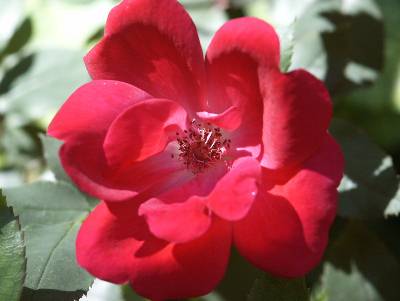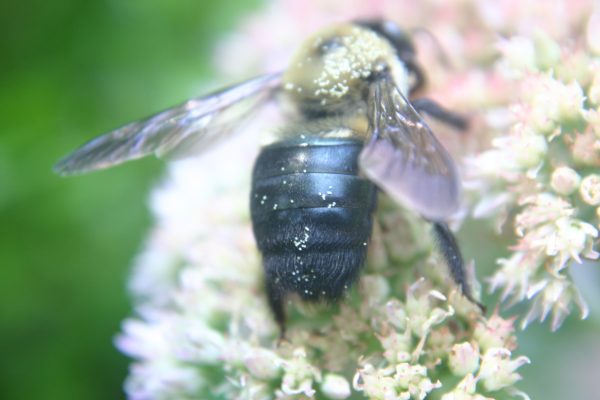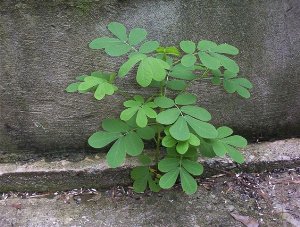Arum – Propagation
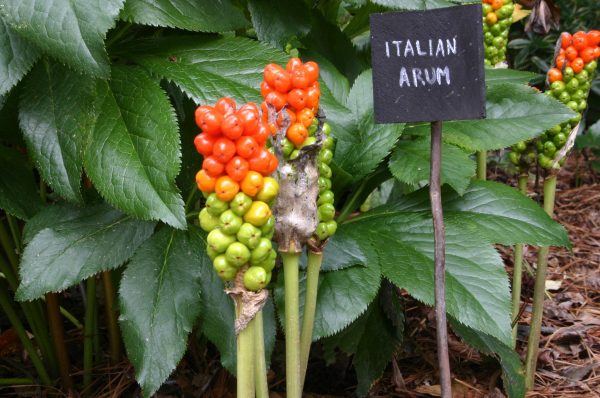
I just can’t figure out why a certain plant I have in my garden is not used more frequently. It is commonly called by its scientific name Arum italicum ‘Pictum’, but the Home and Garden Encyclopedia says another common name is “Cuckoo Pint”! I got my first plants from my friends Chip and Ingrid, who had lots of the arum growing under the oak tree in their front yard. I admire the glossy green leaves, veined in white, that appear in fall and persist in clumps through the winter. Soon this spring a greenish-white spade-like flower (a spathe) will unfurl in the center of each plant. In early summer, the center of the spathe becomes a green spike covered with green berries that change to brilliant orange by August.
Arum is a terrific companion to hosta, another favorite garden plant. They are both tough, colorful and undemanding. Both, too, are easy to multiply. Any hosta clump that’s more than three years old can be dug in spring and divided into three or more individual plants. However, arum is best multiplied in a different way: by planting its seed.
Remember the orange berries I mentioned above? Once they begin to fade I collect them and mash off the pulp, revealing individual black seeds inside. I plant them a half-inch deep in a foot-square corner of one of my raised beds and leave them there for the winter. By February, the seeds sprout en masse’ . A carpet of small leaves covers the soil where the seeds were inserted. I carefully divide the babies and transplant them to a shady “grow-out bed” for the rest of the summer. In this way I now have eighty new arum plants from the three I received originally from my friends.

arum leaves
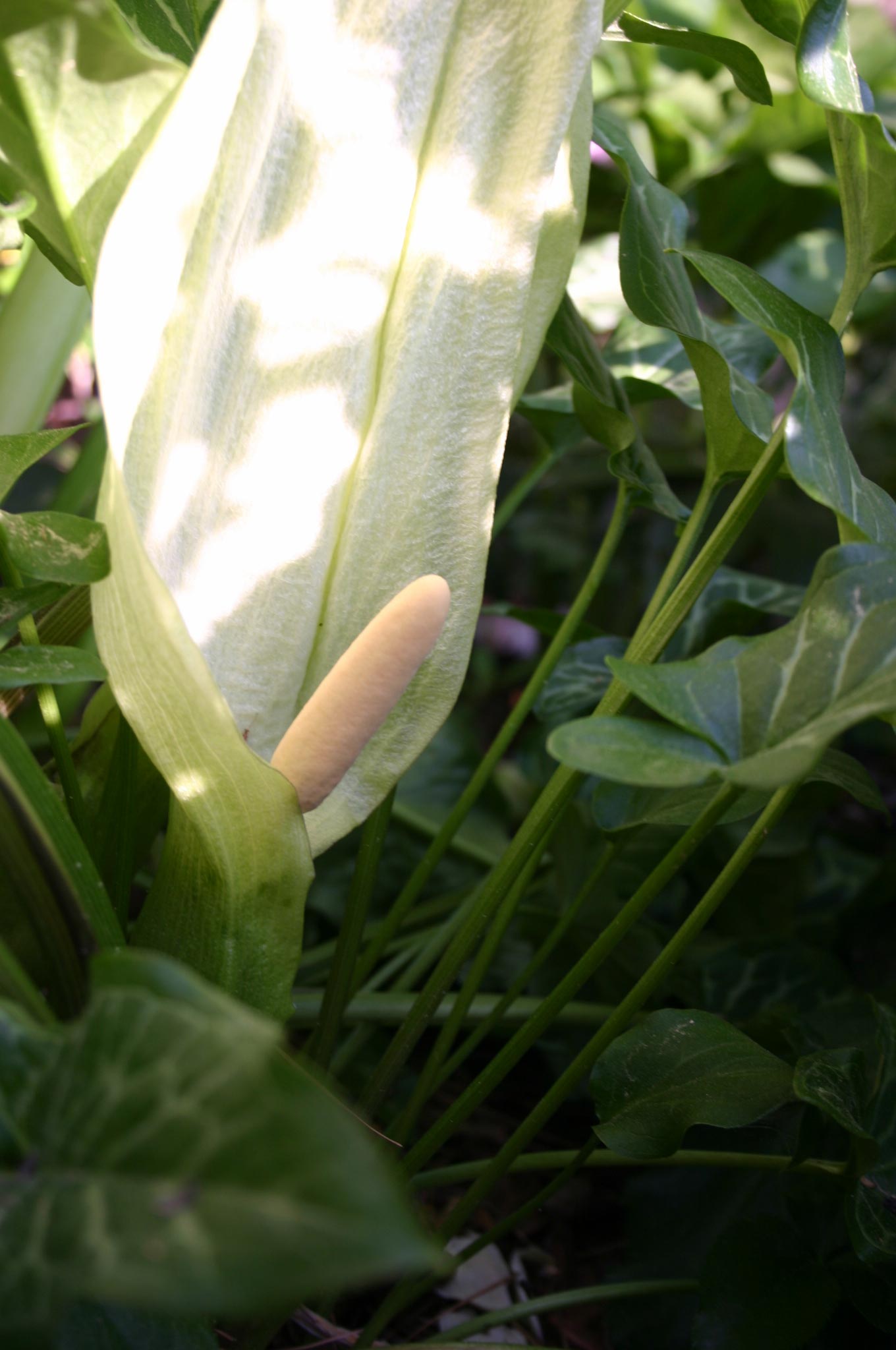
arum spathe

arum seeds



